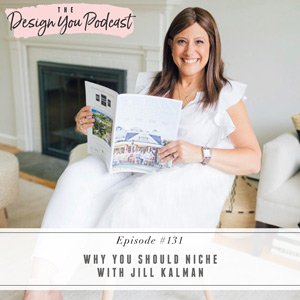
Welcome back to the final installment of my three-part series! This week, I’ll be chatting with another of my fabulous Design You members, Jill Kalman, about what she’s learned from the Design You Membership and how she’s applied it to her business. Jill joins us today to talk about how she found her niche and used it to create a scalable business.
Jill Kalman chose her niche a year and a half before the pandemic hit, and works with people relocating from the city to the suburbs. In two years, she’s transformed her entire business and created endless opportunities for herself, simply by zoning into a specific group of people! She’s here today to share her story and explain the importance of finding a niche.
Tune in this week for an inspiring interview where we’ll discuss how to find a niche and work with it to grow and scale your business. We’ll discuss why taking a leap of faith is the best thing you can do, and why going with your gut can enable you to create a business that you love. Are you ready to get out there yourself, but don’t know where to start? This episode is for you!
If you want to keep this conversation going, you have to join my free Design You Podcast community on Facebook. We have great conversations over there about the podcast episodes and our podcast guests are in there too! So head on over and I’ll see you there!





